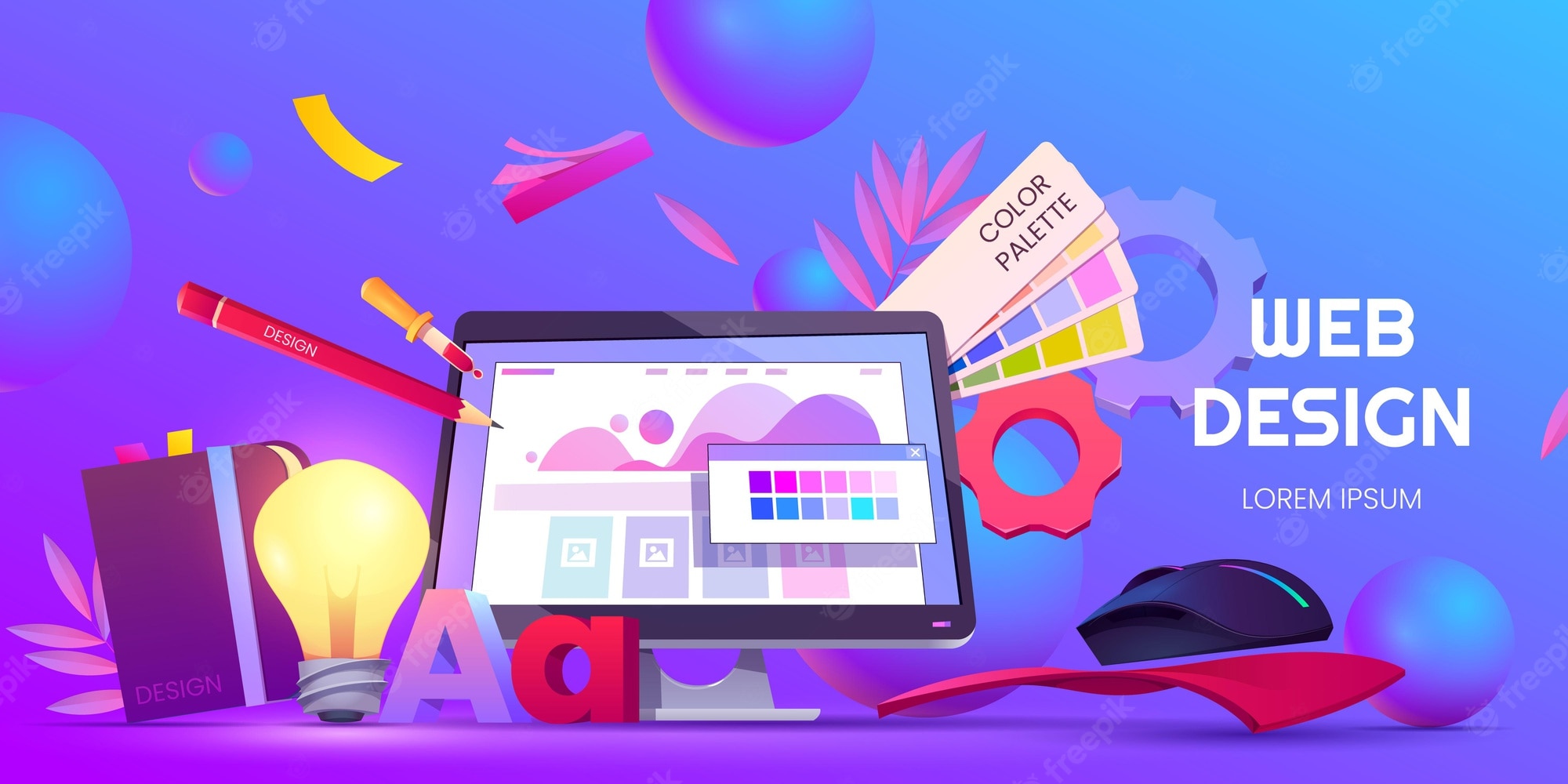Why an agency for web design is necessary for your business growth
The Relevance of User Experience in Reliable Web Design Techniques
User experience (UX) acts as a keystone in effective web design strategies. It forms exactly how customers communicate with a website, affecting their satisfaction and likelihood of returning. A properly designed UX can improve engagement through intuitive navigation and responsive formats. However, forgeting these aspects might bring about disappointment and enhanced bounce rates. Recognizing the intricacies of UX is essential for developers intending to produce compelling digital experiences that resonate with varied audiences. What elements truly drive effective user engagement?
Recognizing User Experience and Its Effect On Design
Although user experience (UX) is usually regarded as a mere aspect of web design, it essentially shapes just how customers connect with an internet site. UX encompasses all aspects of the user's communication, including usability, access, and total contentment. A positive UX cultivates engagement, encouraging customers to discover the website and return in the future. Alternatively, an adverse experience can lead to irritation, causing high bounce prices and lost possibilities for conversion.
Style components like navigating, design, and material organization play vital roles in shaping this experience. Efficient UX style expects user requirements and preferences, ensuring that information is visually appealing and easily obtainable. Furthermore, comprehending user actions with analytics can provide beneficial understandings, educating design decisions that improve use. Ultimately, an extensive understanding of UX allows designers to produce sites that not just attract customers but additionally promote significant communications that line up with business goals and user assumptions.
Trick Concepts of Effective User Experience
Effective user experience rests on several vital principles that improve website functionality and involvement. User-friendly navigating design, receptive format fundamentals, and the relevance of visual pecking order are essential aspects that add to a smooth communication in between individuals and web material. Understanding these concepts allows designers to produce more accessible and straightforward digital atmospheres.
Instinctive Navigation Layout
When customers come across a web site, intuitive navigating layout works as a crucial gateway to their total experience. Effective navigation enables individuals to easily locate the info they look for, enhancing their communication with the site. Secret principles include clear labeling, rational organization, and constant positioning of navigation aspects. Labels ought to be simple, permitting users to anticipate the material they will discover. A well-structured hierarchy helps users comprehend the connection between different sections, leading them via the site flawlessly. In addition, receptive food selections and easily obtainable links add to a liquid experience throughout devices. By prioritizing user-friendly navigation, developers can considerably minimize user disappointment and increase engagement, eventually fostering a favorable understanding of the web site and its content.
Responsive Design Basics
A well-structured navigating system naturally causes the need for a receptive format, which is important in today's diverse electronic landscape. A responsive design warranties that websites feature seamlessly throughout numerous tools, including smart devices, tablets, and desktop computers. This adaptability boosts user experience by allowing web content to be quickly available and aesthetically meaningful, despite display dimension. Key principles of responsive style consist of fluid grids, flexible pictures, and media questions, which promote ideal viewing. In addition, focusing on touch-friendly elements enhances communication on mobile gadgets. By implementing a responsive design, developers can accommodate customers' needs, reduce bounce rates, and boost engagement. Eventually, a well-executed responsive layout fosters a favorable user experience, encouraging site visitors to check out the web site better.
Visual Pecking Order Relevance
Aesthetic hierarchy plays a crucial role in leading customers with an internet site, guaranteeing that crucial details catches their focus initially. By purposefully utilizing dimension, color, contrast, and spacing, designers can create a clear path for users to adhere to. Bigger elements commonly draw the eye, suggesting their value, while contrasting colors can highlight contact us to activity. Furthermore, constant positioning and collection of relevant content improve understanding, making navigation intuitive. Efficient use of visual power structure not only improves usability however additionally supports the total aesthetic of the site, fostering a positive user experience. When users can easily recognize one of the most critical info, they are more probable to engage with the web content, causing enhanced contentment and interaction with the internet site.
The Function of Use in Web Design
Functionality plays a crucial duty in web design, particularly with navigating simplicity and adherence to ease of access criteria. Efficient navigating improves user contentment by enabling site visitors to find info promptly and without effort. Meanwhile, meeting availability requirements assures that all customers, no matter of their capacities, can successfully connect with the site.
Navigation Simplicity
Simplicity in navigating stands as a foundation of efficient web design, substantially influencing user experience. A structured navigation system allows individuals to find details rapidly and without effort, minimizing stress and boosting satisfaction. Clear labeling and logical framework are vital elements, assisting users easily through the web site. Redundant links or overly complex menus can disorient customers, bring about increased bounce prices. Furthermore, mobile responsiveness needs to be thought about, making certain navigating continues to be uncomplicated across tools. Prioritizing necessary web pages and decreasing clutter additionally supports user engagement. Efficient navigation not just promotes a favorable experience but also encourages customers to discover the website much more completely, eventually leading to higher conversion prices. Hereof, navigating simplicity works as an essential element in the overall effectiveness of web design methods.
Accessibility Standards
User interaction is greatly enhanced when websites comply with ease of access requirements, ensuring that all individuals, regardless of their capabilities, can browse and communicate properly. Compliance with these criteria not only expands the target market but additionally improves general user fulfillment. Available design includes attributes such as message choices for pictures, keyboard navigating, and sufficient color comparison, which assist in usage by individuals with handicaps. In addition, carrying out these requirements can positively impact seo (SEARCH ENGINE OPTIMIZATION) by boosting site structure and clearness. As web design progresses, focusing on availability ends up being vital in cultivating a comprehensive digital atmosphere. By embracing these standards, designers contribute to a more fair net, ultimately driving user commitment and interaction.
Significance of Responsive Design for User Involvement
As customers significantly access websites with a selection of gadgets, the importance of responsive layout ends up being critical for involving individuals properly. Responsive style warranties that an internet you could try this out site adapts effortlessly to different display dimensions, giving a suitable watching experience regardless of the device utilized. This adaptability boosts user interaction by facilitating much easier navigation and interaction with web content.
When customers experience a website that is responsive, they are more likely to remain much longer, explore even more, and return in the future. A well-designed responsive format minimizes the aggravation usually connected with scrolling and zooming on smaller displays, thereby lowering bounce prices. In addition, receptive layout can positively impact online search engine positions, as internet search engine focus on mobile-friendly sites. In today's digital landscape, where mobile usage continues to increase, applying responsive design is not just advantageous, however vital for keeping user interaction and guaranteeing a positive experience throughout all tools.
Enhancing Load Times for Better User Satisfaction

To boost load times, internet developers should prioritize optimizing photos, leveraging web browser caching, and reducing HTTP requests. Furthermore, employing Web content Distribution Networks (CDNs) can accelerate content delivery by dispersing it throughout different geographic places. Simplifying code, such as pressing CSS and JavaScript documents, further adds to quicker packing rates.
Eventually, a dedication to enhancing lots times not only enhances user complete satisfaction but likewise enhances brand commitment and boosts the possibility of repeat sees. A swift, smooth experience is necessary for retaining individuals and cultivating favorable communications.
The Influence of Visual Power Structure on User Interaction
Visual hierarchy offers as a crucial component in guiding user interaction on a site. By organizing content in such a way that prioritizes info visually, developers can influence exactly how users browse and engage with a site. This power structure is established through numerous layout techniques, site consisting of dimension, shade, spacing, and comparison. Larger typefaces or strong colors draw interest to critical elements, such as phone calls to activity or headings, while controlled shades and smaller sized typefaces can show secondary info.
Reliable visual pecking order aids individuals rapidly identify what is essential, decreasing cognitive tons and improving functionality. It enables instinctive navigation, making it simpler for users to locate what they need without frustration. As customers interact with an internet site, a well-structured aesthetic power structure fosters a much more enjoyable experience, inevitably bring about higher engagement and conversion rates. Developers have to prioritize these concepts to produce a reliable and user-centered internet setting.
Measuring User Experience: Strategies and devices

Regularly Asked Concerns
How Can I Boost My Internet site's User Experience on a Budget plan?
To improve a website's user experience on a spending plan, one can optimize page tons rate, simplify navigating, carry out responsive style, enhance material quality, and collect user comments for constant improvements, ensuring an enjoyable visitor experience.
What Prevail User Experience Mistakes to Avoid in Web Design?
Typical user experience errors in web design consist of messy layouts, poor navigation, slow-moving filling times, lack of mobile responsiveness, disregarding ease of access, irregular branding, and falling short to focus on user responses - Web Design services. Each can considerably impede general website performance
Just how Frequently Should I Update My Website for Better User Experience?
Sites ought to be updated frequently, preferably every couple of months, to preserve excellent user experience. Regular updates aid address usability concerns, refresh content, and adapt to altering user demands, ensuring the website continues to be relevant and engaging.

Can User Experience Influence Search Engine Optimization Rankings on My Website?
User experience can substantially influence search engine optimization positions, as internet search engine focus on sites that supply smooth navigation, quick filling times, and appealing material. A positive user experience can lead to reduced bounce rates and higher search exposure.
What Role Does Ease Of Access Play in User Experience Style?
Access plays an essential duty in user experience layout by guaranteeing that all people, despite abilities, can browse and connect with a website properly. This inclusivity enhances total fulfillment and engagement among diverse individuals.
User experience (UX) is typically perceived as a plain facet of internet layout, it essentially shapes exactly how individuals engage with an internet site. User interaction is greatly enhanced when websites stick to access criteria, guaranteeing that all individuals, no matter of their abilities, can navigate and connect successfully. Gauging user experience (UX) is vital for understanding exactly how successfully a website meets the needs of its users. Furthermore, usability testing, where genuine users navigate the site while viewers note troubles, offers straight feedback on user experience. Typical user experience mistakes in web style consist of cluttered designs, poor navigation, try here slow packing times, absence of mobile responsiveness, overlooking accessibility, irregular branding, and falling short to prioritize user responses.